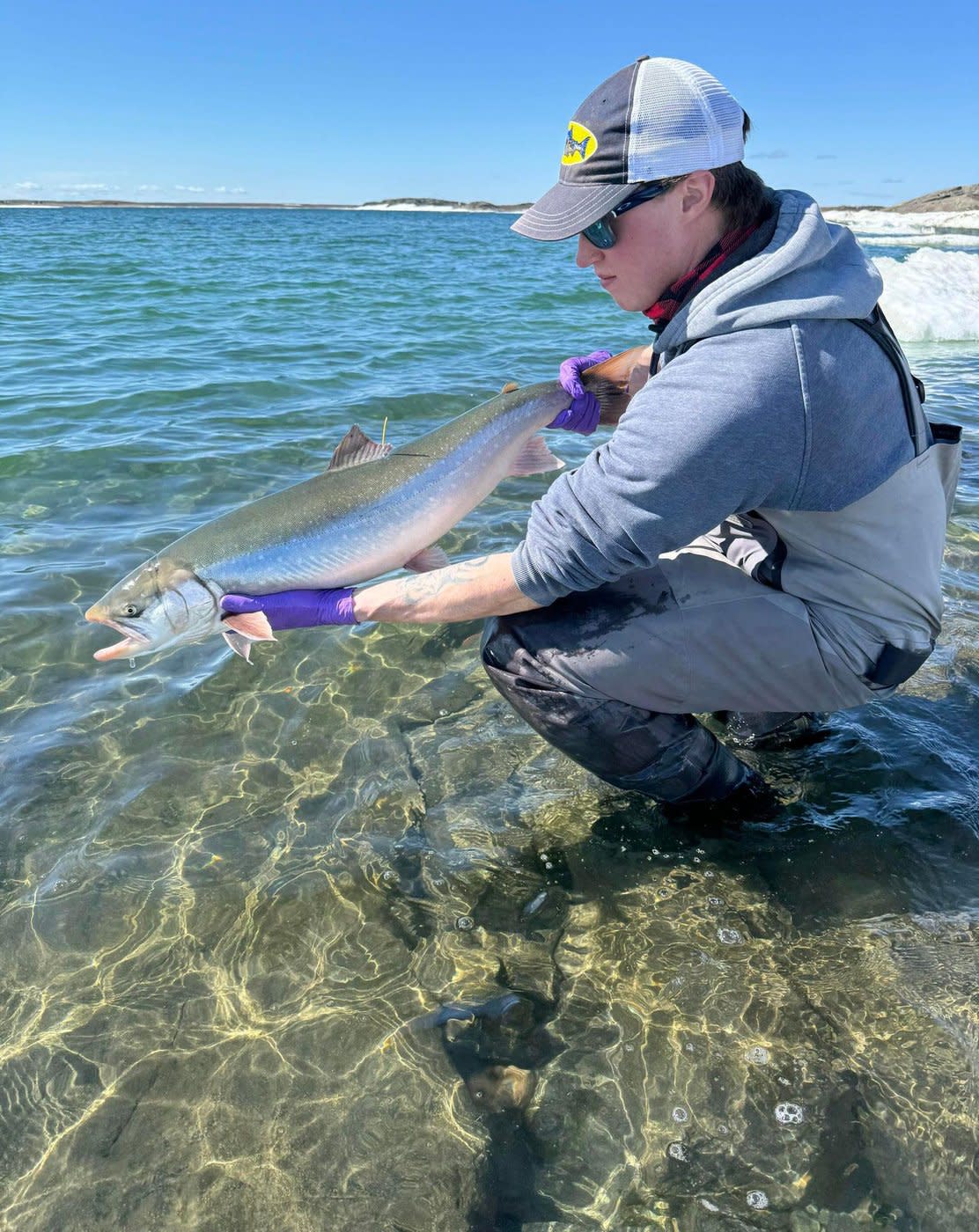Learning where the fish swim

There could be good money in those fins.
The Department of Fisheries and Oceans (DFO) has been working with the Kangiqliniq Hunters and Trappers Organization (HTO) on a fish tagging project in Rankin Inlet to monitor the migratory behaviour of sea-run Arctic char, capelin, lumpfish and Greenland cod.
As the fishing season is now here, there is a chance fishers may catch one of these tagged fish. If so, fishers may contact aquatic science biologist with Fisheries and Oceans Canada, Connor Faulkner, or the Kangiqliniq HTO in Rankin Inlet to co-ordinate drop off of the tagged fish.
Faulkner said during the past couple of years, DFO has been hosting Arctic char workshops in the Kivalliq region.
He said representatives from all Kivalliq HTOs, as well as other stakeholders and co-management partners have been present at these meetings.
“Essentially, why these meetings were brought about was to engage the communities with research pertaining to Arctic char and what research questions they were most interested in,” said Faulkner.
“So, it was an engagement with DFO to see what the communities were interested in and, maybe, what research questions they could tackle from the community up.
“In 2023, we tagged 33 Arctic char from around the Rankin Inlet area. In 2024, we finished our tagging on June 26. We tagged 40 Arctic char and nine Greenland cod. This coming fall, we’re hoping to tag an additional five capelin, 10 lumpfish and another six Greenland cod.”
Faulkner said there are posters around the community, as well as on numerous social media pages, describing the process of returning a tagged fish for a cash reward — no amount was disclosed, however.
He said DFO would like to receive the whole fish, if possible, but if an individual wishes to keep it, that’s OK, as well. They can just return the little tag, which is in the back of the fish by the dorsal fin.
“There is also an acoustic transmitter inside the body cavity of the fish and there is a reward system for the fisher to return those tags to us.”
Faulkner said the miniature acoustic transmitters were put in the body cavity of the fish once they were tagged. DFO has receivers in the ocean around the general Rankin Inlet area and the tags will transmit the fish identification code to a receiver once it swims within range.
He said the receivers last about a year and then they have to be swapped out.
“We’ll go back in the fall, pull up those receivers, download all the data and that will give us information on which fish was where.
“So, you’re able to track where a fish went during its summer migration and you can also see if it exits the Rankin Inlet area. Does it return and go up the same river system, or is it going back to a different river system for the winter due to ease of access? We’ll learn different things from the different species.
“We worked with three local technicians this year — Sonny Ittinuar, Tristen Dias and Malla Tatty — and they were a great help and assistance. We really appreciate all their work. I hope they learned a lot. We’re always learning from them, as well.”
Darrell Greer, Local Journalism Initiative Reporter, Kivalliq News


